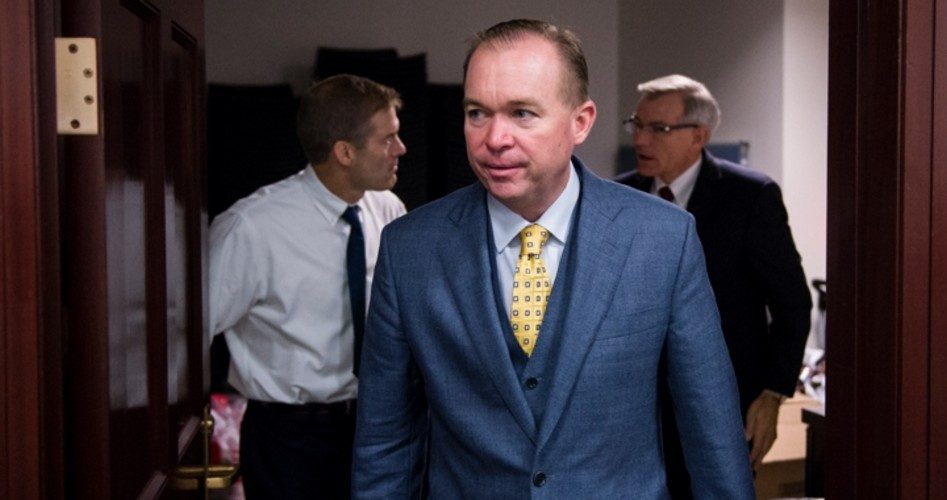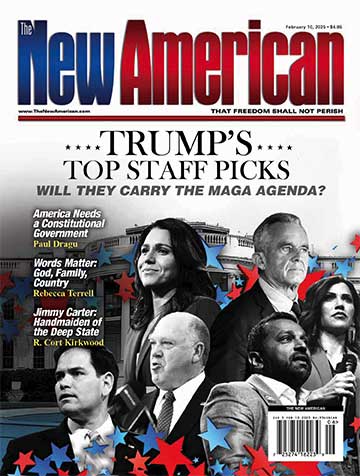
On Friday President-elect Donald Trump nominated Representative Michael “Mick” Mulvaney (shown, R-S.C.) to head up his Office of Management and Budget (OMB). Sounding like a fiscal conservative, Trump said this in his statement: “Right now we are nearly $20 trillion in debt, but Mick is a very high-energy leader with deep convictions for how to responsibly manage our nation’s finances and save our country from drowning in red ink.”
Mulvaney, freshly reelected for a third term, said he was up to the task: “The Trump administration will restore budgetary and fiscal sanity back in Washington after eight years of an out-of-control, tax and spend financial agenda.”
Mulvaney rode the Tea Party into office in 2010, removing a 14-term Democrat in the process. At the time, he stated, “If political reporters want to know what drives the Tea Partiers, it is their belief in the Constitution. That’s what has always driven me in politics and will guide me in Congress.”
He remained as true to his word as any of those riding the same wave, co-founding the House Republican Freedom Caucus and generating an impressive Freedom Index rating (a congressional scorecard that rates congressmen based on their adherence to the Constitution) of 83 out of 100. He was instrumental in removing House Speaker John Boehner, first voting against him in 2013 and then helping to force him to resign in 2015. He has consistently pushed for caps on government spending including cuts to Medicare, and supported government shutdowns in 2013 and again in 2015 over the issue.
If confirmed by the Senate, Mulvaney would be responsible for designing a budget that would face massive challenges, including those from his new boss. In addition to promising to repeal ObamaCare, Trump has also stated he will cut taxes substantially while increasing government spending on transportation infrastructure, military and veterans’ healthcare, and other projects without offering any details on how to pay for it.
This puts Mulvaney squarely athwart Trump, as Mulvaney has pushed for reductions in government spending, including cuts to the Pentagon’s budget.
The challenges are staggering. Obama’s budget, passed with the help of Republicans, called for spending $4 trillion in 2016 with revenues of just $3.5 trillion, leaving a deficit of $500 billion. Budget projections out to 2025 show those deficits increasing each year, adding nearly $6 trillion to the national debt by then.
The parallels to David Stockman’s short but memorable career as President Ronald Reagan’s OMB director are startling, and unnerving. Stockman, it will be remembered, was the architect of Reaganomics, based on something called “supply side” economics. The concept was simple: Cutting taxes would, according to Arthur Laffer (author of the Laffer Curve) stimulate the economy so much that tax revenues would, over time, increase substantially. If government spending could be restrained at the same time, the government budget would shortly move into “surplus,” allowing the government the opportunity to begin to whittle away at the country’s gargantuan national debt.
Stockman got half a loaf. Writing later in his book The Triumph of Politics: Why the Reagan Revolution Failed, he said that getting the tax cuts done was the easy part. Cutting government spending proved impossible. He couldn’t persuade enough Republicans to reduce spending, and the net result was larger deficits and an even larger national debt.
The tax cuts worked under Reagan, dropping the unemployment rate at the start of his administration in 1981 from 11 percent to five percent by 1988. He reigned over a net job increase of 21 million that continued into the 1990s, long after he left office. The “misery index” (the inflation rate added to the unemployment rate) dropped from 19.3 at the beginning of his administration to 9.72 when he left office — the greatest improvement since the Truman administration.
But unable to secure the spending cuts, Stockman saw government spending soar to 22.4 percent of GDP, far above the 20.6 percent average from 1971 to 2009. The national debt tripled, from $712 billion in 1980 to $2.1 trillion in 1988.
Mulvaney will be facing additional challenges as well. The Republican majority in the Senate remains paper-thin, and Democrats cut into the Republican majority in the House following the November election. The anemic recovery from the Great Recession is now nine years old. If the economy tips over into another recession during Trump’s first term, which some economists predict may happen, politicians will likely revert to short-term thinking and political survival and attempt to “spend” the economy into recovery once again.
And then there are interest rates. With the Fed raising rates (albeit slightly) for the second time, and promising to raise them at least three more times next year, Mulvaney will be faced with the rising cost of servicing an expanding national debt. In the fiscal year ending on September 30, the federal government spent $433 billion on debt service, or more than 10 percent of its budget. It won’t take much to push debt service to 15 percent or even 20 percent, especially if Mulvaney is only able to “pull a Stockman”: get the tax cuts but not the cuts in government spending.
For what it’s worth, Stockman quit the OMB after four and a half years out of frustration.
Photo: AP Images
An Ivy League graduate and former investment advisor, Bob is a regular contributor to The New American magazine and blogs frequently at LightFromTheRight.com, primarily on economics and politics. He can be reached at [email protected].



